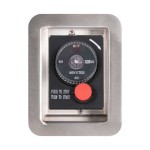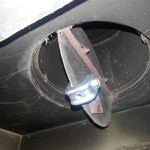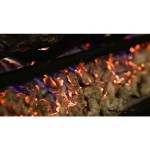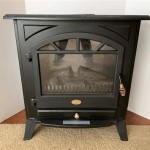Brick Outdoor Fireplace Plans: A Comprehensive Guide
An outdoor fireplace serves as a focal point for entertainment and relaxation in a backyard setting. Constructing a brick outdoor fireplace represents a significant undertaking, demanding careful planning and execution. Utilizing well-defined brick outdoor fireplace plans becomes essential for ensuring a structurally sound and aesthetically pleasing outcome. This article delves into the key considerations, design elements, and practical steps involved in realizing a brick outdoor fireplace project.
The decision to build a brick outdoor fireplace often stems from the desire to extend living space into the outdoors, creating a cozy environment for gatherings or solitary enjoyment. Brick, a durable and visually appealing material, lends itself well to fireplace construction, offering both heat retention and a timeless aesthetic. However, navigating the complexities of design, material selection, and construction techniques necessitates a structured approach, which is where detailed plans become invaluable.
Brick outdoor fireplace plans are more than simple diagrams; they are comprehensive blueprints that outline every aspect of the project, from the foundation to the chimney. They specify dimensions, materials, construction methods, and safety features. Adhering to a well-thought-out plan minimizes errors, reduces material waste, and ultimately contributes to a safe and functional outdoor fireplace.
Understanding the Importance of Detailed Plans
The construction of a brick outdoor fireplace, unlike some smaller DIY projects, requires a significant investment of time, money, and effort. Without meticulously detailed plans, the risk of encountering costly mistakes increases substantially. Plans provide a roadmap, allowing for accurate material estimation, proper site preparation, and adherence to relevant building codes. Furthermore, plans facilitate a clear understanding of the project's scope, enabling informed decisions throughout the construction process.
One crucial element emphasized in plans is the foundation. The foundation must be designed to support the considerable weight of the brick structure, preventing settling or cracking over time. The plans will specify the dimensions, depth, and composition of the foundation, taking into account soil conditions and local climate. Inadequate foundation design is a common cause of structural failure in brick structures, highlighting the importance of adhering to the plan's specifications.
Plans also detail the firebox construction, including the dimensions, materials, and firebrick lining. The firebox is the heart of the fireplace, and its design must ensure efficient combustion and proper draft. Plans incorporate features such as fire-resistant mortar, a grate for fuel support, and an air intake system to regulate airflow. The proper construction of the firebox is paramount for safety and performance.
Another critical aspect addressed in the plans is the chimney design. The chimney is responsible for venting smoke and gases away from the fireplace, ensuring a safe and enjoyable outdoor experience. Plans specify the height, diameter, and construction materials of the chimney, taking into account factors such as prevailing winds and surrounding structures. Improper chimney design can lead to smoke backdraft, creating a hazardous situation.
Moreover, detailed plans can include aesthetic elements, such as decorative brick patterns, mantel design, and surrounding patio integration. These elements contribute to the overall visual appeal of the fireplace, transforming it from a functional structure into a design statement. The plans can provide renderings or detailed drawings of these features, allowing for visualization and customization.
Key Design Considerations for Brick Outdoor Fireplaces
Several design considerations influence the selection and implementation of brick outdoor fireplace plans. These factors encompass the fireplace's size, style, location, and intended use, all of which contribute to its functionality and aesthetic appeal. Careful consideration of these design elements ensures that the finished fireplace meets the user's specific needs and complements the surrounding outdoor environment.
The size of the fireplace should be proportional to the surrounding space. A large fireplace in a small backyard can overwhelm the area, while a small fireplace in a large yard might seem insignificant. The plans should specify dimensions that are appropriate for the available space, taking into account seating arrangements and traffic flow. Consider the scale of surrounding features, such as the house and landscaping, to ensure a cohesive design.
The style of the fireplace should complement the architectural style of the house and the overall aesthetic of the outdoor space. Options range from traditional brick fireplaces with elaborate detailing to modern fireplaces with clean lines and minimalist design. The plans should reflect the desired style, incorporating appropriate materials, colors, and decorative elements. Consider the existing landscaping and outdoor furniture to create a unified design scheme.
The location of the fireplace is another crucial design consideration. The fireplace should be situated in a location that is both convenient and safe. Consider factors such as prevailing winds, proximity to flammable materials, and accessibility from the house. The plans should incorporate safety clearances and drainage considerations. Also, consider the view from the fireplace, ensuring that it offers a pleasant and relaxing outlook.
The intended use of the fireplace will also influence the design. If the fireplace is primarily intended for cooking, the plans should include features such as a built-in grill, smoker box, or pizza oven. If the fireplace is primarily intended for ambiance and warmth, the plans can focus on aesthetic elements and comfortable seating arrangements. Consider the specific needs of the user when selecting and implementing the design.
Furthermore, accessibility and maintenance should be considered in the design. The plans should incorporate features that facilitate easy access for cleaning, fueling, and repairs. Consider the placement of a wood storage area and the inclusion of a cleanout door for ash removal. Also, consider the durability of the materials and the ease of maintenance, selecting options that will withstand the elements and require minimal upkeep.
Practical Steps in Implementing Brick Outdoor Fireplace Plans
Once the brick outdoor fireplace plans have been finalized, the construction process can commence. This process involves several distinct stages, including site preparation, foundation construction, bricklaying, chimney construction, and finishing touches. Each stage requires careful attention to detail and adherence to the plan's specifications to ensure a successful outcome.
Site preparation involves clearing the area of vegetation, debris, and any other obstructions. The area should be leveled and compacted to provide a stable base for the foundation. The plans will specify the required dimensions of the site, ensuring that the foundation will fit properly. Proper site preparation is essential for preventing settling and ensuring the long-term stability of the fireplace.
Foundation construction involves excavating the area to the specified depth and pouring a concrete foundation. The plans will specify the dimensions, thickness, and reinforcement requirements of the foundation. The concrete should be properly mixed and poured to ensure a strong and durable base. The foundation should be allowed to cure completely before proceeding with the bricklaying.
Bricklaying is the most time-consuming and skilled aspect of the project. The plans will specify the brick pattern, mortar type, and construction techniques. The brick should be laid in a level and plumb manner, ensuring a strong and aesthetically pleasing structure. Proper mortar joints are essential for preventing water penetration and ensuring the structural integrity of the fireplace. It's often advisable to engage a skilled bricklayer to ensure proper execution.
Chimney construction involves building the chimney flue, smoke chamber, and chimney stack. The plans will specify the dimensions, materials, and construction techniques for each component. The chimney must be built to the correct height and diameter to ensure proper draft. A chimney cap should be installed to prevent rain and debris from entering the chimney. The chimney construction must adhere to local building codes and safety regulations.
Finishing touches involve adding decorative elements, such as a mantel, hearth, or stone veneer. These elements can enhance the aesthetic appeal of the fireplace and create a more inviting outdoor space. The plans should specify the materials and installation techniques for these finishing touches. Consider adding landscaping or outdoor furniture to complement the fireplace and create a cohesive outdoor living area.

Outdoor Fireplace With Bench Seating W Tips From A Professional Mason

Small Outdoor Brick Fireplaces Related Post From Diy Fireplace Plans

How To Build An Outdoor Fireplace Today S Creative Life

Saguaro Diy Outdoor Fireplace Plan

Diy Outdoor Fireplace Ideas
:max_bytes(150000):strip_icc()/chrisjulia-971f3f9eb708447bbd364fc7f4a16280.jpg?strip=all)
10 Free Outdoor Fireplace Construction Plans

Outdoor Fireplace Construction Plans Bing S Brick Backyard Designs

45 Beautiful Outdoor Fireplace Ideas Install It Direct

Pima Ii Diy Outdoor Fireplace Construction Plan

How To Build An Outdoor Fireplace
Related Posts








